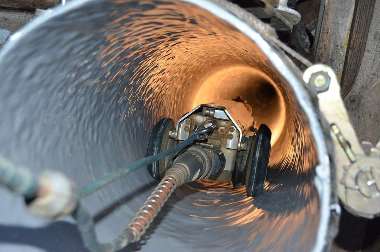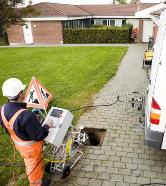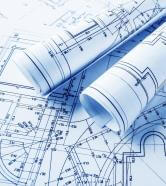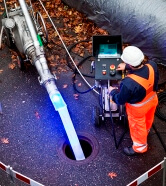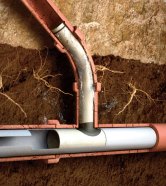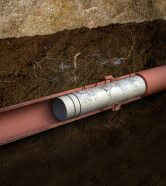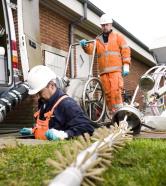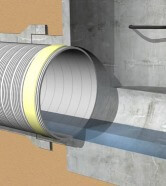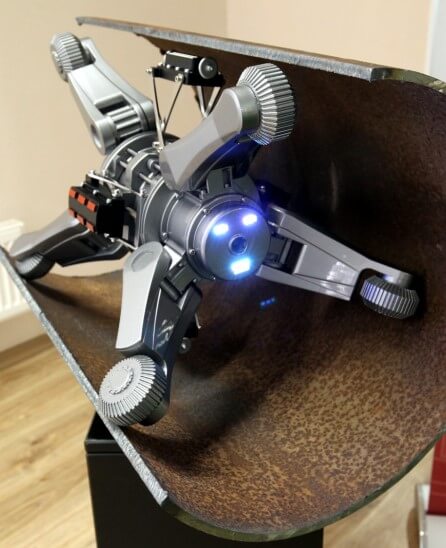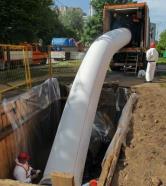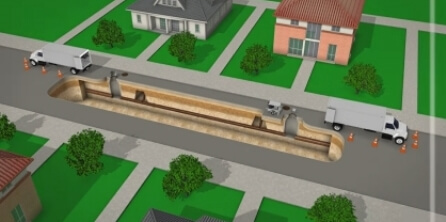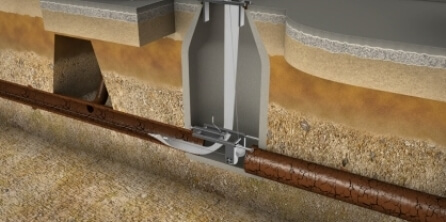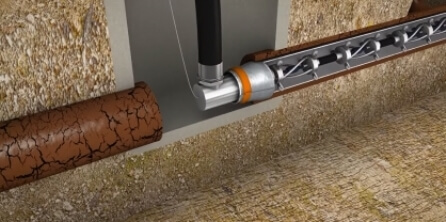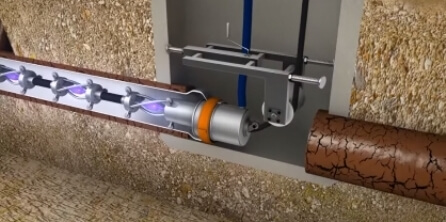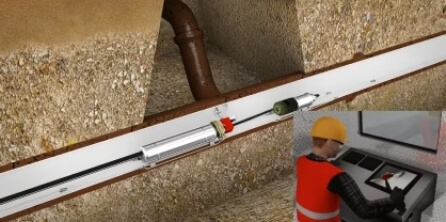
Pipes rehabilitation
Pipeline rehabilitation is the restoration of a damaged part of a tube without massive ground works and lengthy concomitant road closure
"Two thirds of the country's electricity supply networks, 57% of thermal communications and almost half of the water supply networks are worn out. These figures speak for themselves"
from the message of the President of Kazakhstan Kassym-Jomart Tokayev

From the message of the President of the Republic of Kazakhstan Kassym-Jomart Tokayev, it becomes obvious that many engineering networks and highways of life support systems are severely worn out
The majority of communications were installed back in Soviet times with the expectation of a planned replacement or complete reconstruction of the area. Therefore, the standard service life of the pipes was limited
In many cases, it has already expired, but worn-out and often rusted pipe systems continue to work, which, of course, sooner or later leads to destruction, leaks, blockages and other problems. Repairing such pipes in the classical way with digging a trench is long, expensive and not always possible, and sanitation becomes a way out of the situation
The sanation of pipelines allows you to solve the following tasks
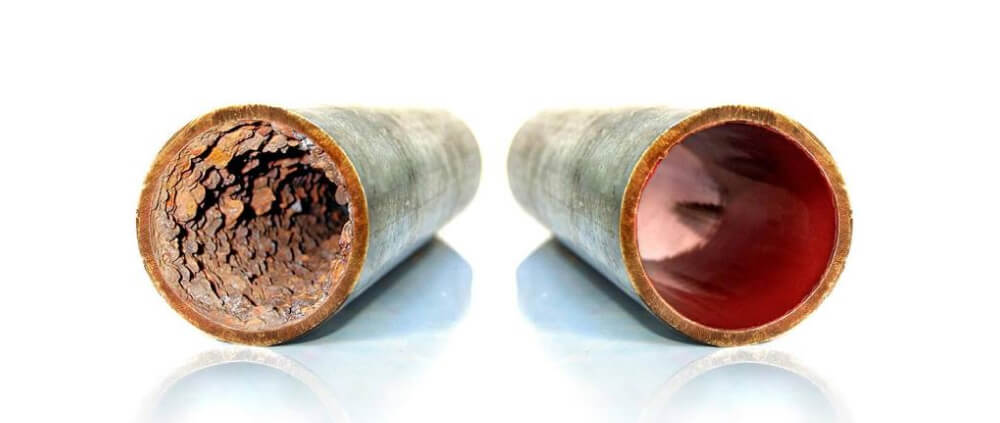
Restore pipes after corrosion
Restore pipes after partial wear due to corrosion
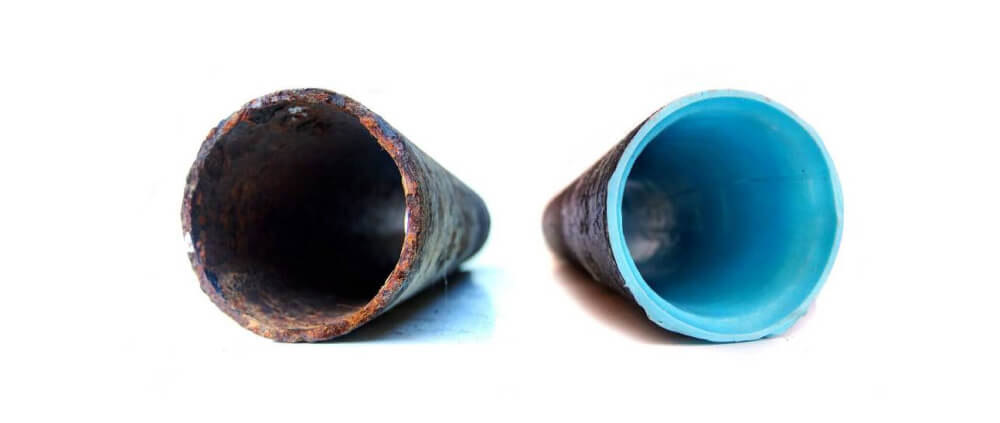
Replace worn-out sections of the pipeline
Partially replace worn-out sections of the pipeline without complete dismantling and large-scale excavation and related works
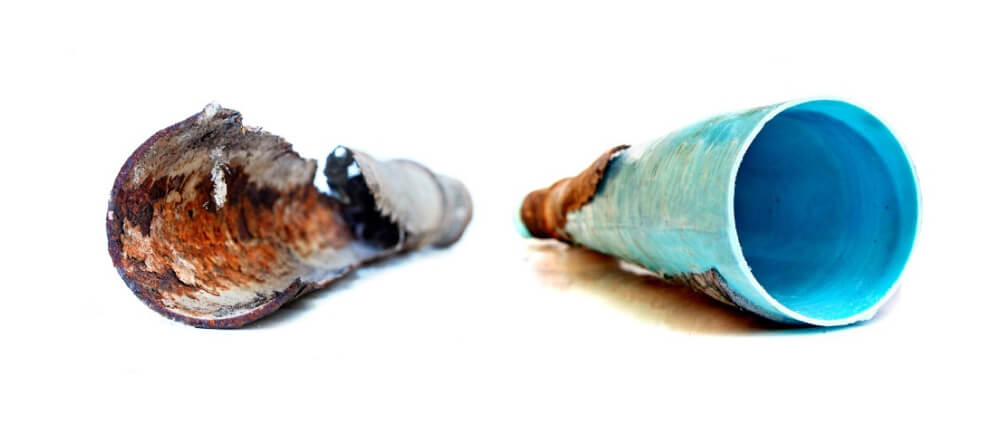
Replace the destroyed sections of the pipeline
Completely replace sections of pipe that have been destroyed to such an extent that their restoration is no longer possible
Advantages of sanitation
Pipes sanitation
We restore pipes with little time and resources, without carrying out large-scale ground works

High porosity, low resistance to water hammers, as well as natural exposure to corrosion are potential pipe problems due to the characteristics of the materials
Sanation technologies make it possible to compensate for the listed flaws
An important advantage of this technology is the possibility of its application for the restoration of pipes made of various materials

Steel pipes

Cast iron pipes
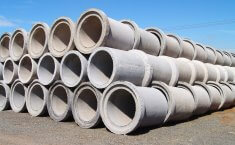
Reinforced concrete pipes
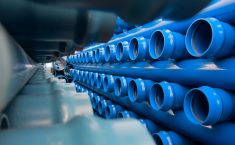
Polymer pipes
Advantages
In addition to the small mass of polymer pipes, a large assortment of their standard sizes, durability and the ability to work in the cold season, trench-free pipeline sanitation has other advantages
Traffic
The traffic flow does not stop on the road laid over the damaged section of the sanitized engineering and technical highway
01
Minimal ground works
Minimal need for earthworks, which significantly reduces the cost of special equipment (excavators, dump trucks, etc.)
02
Simplified projects and estimates
Simplified drafting of technical projects and estimates, because all actions are carried out on a limited section of engineering communications
03
Quality and speed of movement of the medium
The quality and speed of movement of the medium transported by the pipeline increases, thanks to the smooth inner surface of the polymer liner
04
Less need for special equipment
Access of special equipment is not always required, which allows the method to be applied on limited areas and attract a minimum of employees
05
Access to the inner surface
Access to the inner surface of the sections at turns, bends, branches of the main pipeline is provided
06
Increased service life
The predicted service life of pipes after sanitation is up to 50 years, depending on the primary condition of the pipe
07
The repair time is reduced by 3-5 times
Reduces the time required for repair by 3-5 times compared to an open gasket
08
Bypassing adjacent communications
Does not affect adjacent communications and highways laid nearby
09
Work without stopping drains
There is an opportunity to carry out work without stopping drains
10
Leave an application now to obtain a consultation
We know how to restore pipes without carrying out large-scale land works, with minimal costs to extend the service life and quality
After the application, our specialists will consult you and make a proposal for your request

Areas of application
Water supply and sewerage networks
Domestic water and sewer networks are worn out most seriously, while their operation is carried out in an intensive mode. It is extremely inconvenient to repair them in the usual trench way, unlike sanitation method
Drainage and stormwater systems
Reconstruction of drainage and stormwater systems on adjacent urban and suburban areas, public and industrial buildings and structures is also carried out by means of trench-free sanitation
General and technological engineering networks
The method has been mastered by industrial enterprises - it is used for the reconstruction of general and technological engineering networks laid on their territory
Engineering, technical and utility infrastructure
Also, the sanation is suitable for the reconstruction of urban engineering and utility infrastructure: pipes of fountains, common areas of communications, etc.

Features of pipeline sanitation
The sanation of the pipeline requires a preliminary examination of the damaged highway and a recovery plan
The work of most utilities, except for sewer systems, should be suspended for a while
When ordering rehabilitation works, it is necessary to take into account the specifics of their implementation
Technical features
The restoration of pipes depends on the diameter and type of pipe, also during the rehabilitation, the distance between the wells should not exceed 500 m
Title
Diameter
Pressure system
150 - 1500 mm
Pressure-free system
up to 3500 mm
Polymer pipes
100 - 2800 mm

Stages of pipeline rehabilitation
Condition assessment
First, a self-propelled robot with a camera and a lamp is launched to assess the condition of the inner surface of the pipe to identify problem areas
01
Pipeline cleaning
After that, sand, calcium, carbonates and rust are cleaned by mechanical and hydraulic methods, while thinning of the walls is possible
02
Measure the diameter of the lumen
Upon completion of cleaning, a second revision is carried out and the diameter of the lumen is measured
03
Pipe broaching and installation
Next, a new pipe is inserted into the existing one, which is filled with water or air, heated for polymerization and connected to existing communications
04
Control inspection
After carrying out all the work, a robot is again launched into the repaired section for a control inspection of the pipe
05
International experience in the implementation of pipe sanitation
The international company YAROV GROUP develops the application of pipeline sanitation using world experience and advanced technologies

In Kazakhstan, the YAROV GROUP company is represented by the enterprise "Tore-Chingizid L.T.D.". The key principle of synergy is the introduction of international experience in the implementation of pipeline rehabilitation to achieve the most effective long-term result
All services provided comply with the required standards and are carried out on the basis of permits and certificates of conformity. We use exclusively modern and advanced equipment and technologies, all our employees have extensive experience and regularly undergo professional development
This approach allows us to implement the rehabilitation of pipelines at a high level in compliance with deadlines and agreements
Leave an application now to get a consultation and an estimate for your project

